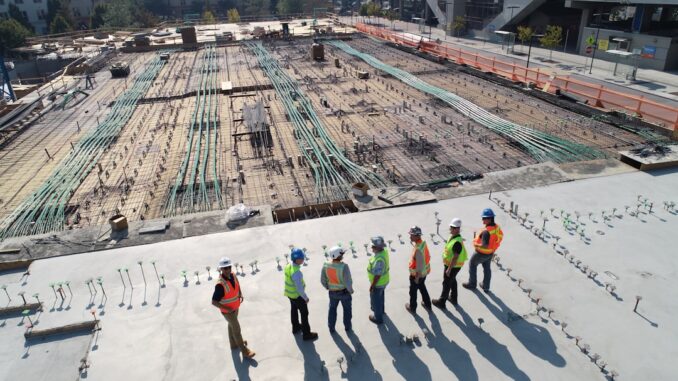
In 2025, the UK is embarking on a comprehensive overhaul of its building safety regulations, marking a pivotal shift towards enhanced construction standards and resident protection. This ambitious reform package encompasses several key initiatives designed to address historical safety shortcomings and promote sustainable development.
Introduction of the Building Safety Levy
A cornerstone of the upcoming reforms is the Building Safety Levy, slated to commence in autumn 2025. This levy will apply to all new residential buildings in England requiring building control approval, with certain exceptions. The primary objective is to generate approximately £3.4 billion over the next decade, funds earmarked for the remediation of building safety defects. While the specific rates are yet to be announced, the initiative underscores a proactive approach to ensuring financial protection for leaseholders and taxpayers. (osborneclarke.com)
Focus360 Energy: property compliance services – pre-planning to post-construction. Learn more.
Stricter Fire Safety Regulations
Fire safety emerges as a focal point in the 2025 reforms. Effective from March 2, 2025, all newly constructed care homes in England will be mandated to install sprinkler systems, irrespective of the building’s height or size. This measure aims to provide an additional layer of protection for residents, particularly those with limited mobility or other health issues that could impede swift evacuation during a fire. The National Fire Chiefs Council has lauded this development, emphasizing that sprinklers can significantly reduce the likelihood of a fire spreading beyond its point of origin, thereby buying crucial time for evacuation and firefighting efforts. (ohsmagazine.com)
In a move to address environmental concerns, the UK is phasing out the use of Aqueous Film Forming Foam (AFFF) fire extinguishers, which contain per- and polyfluoroalkyl substances (PFAS). These substances are known for their persistence in the environment and potential health risks. By July 4, 2025, the use of AFFF extinguishers will be completely banned in the UK. Fire safety companies are responding by transitioning to fluorine-free alternatives and water-based extinguishers, ensuring that fire suppression capabilities are maintained without compromising environmental safety. (ohsmagazine.com)
The Future Homes Standard, set to become compulsory in 2025, represents a significant step towards creating a more sustainable and energy-efficient housing stock in the UK. By focusing on low-carbon heating technologies and stringent fabric standards, the standard aims to reduce carbon emissions, lower energy bills for homeowners, and contribute to the UK’s net-zero goals. The construction industry will play a crucial role in implementing these changes and ensuring that new homes meet the required standards. (journals.cices.org)
Enhanced Regulatory Oversight and Professional Standards
The government is adopting several changes related to greater regulation of professionals involved in the design and construction process, such as fire engineers, architects, principal designers, and principal contractors. A panel of experts and academics will be assembled to consider how best to regulate the fire engineering profession, with a plan to achieve this finalized by autumn 2025. Additionally, a system of mandatory accreditation will certify the competence of fire risk assessors, overseen by the UK Accreditation Service (UKAS). These measures aim to bolster the professionalism and accountability within the construction sector. (pinsentmasons.com)
Implications for Developers and the Construction Industry
While these reforms are poised to enhance building safety and sustainability, they also present challenges for developers and the construction industry. The rapid and widespread regulatory changes have placed substantial pressure on new home deliveries. Homebuilder Berkeley has expressed concerns regarding these reforms, highlighting the strain on project timelines and delivery capabilities. Despite these challenges, Berkeley has maintained its earnings forecast for the fiscal year ending April 30, predicting an income of £525 million. (reuters.com)
Conclusion
The UK’s 2025 building safety reforms signify a decisive move towards more stringent construction standards and enhanced resident protection. By introducing measures like the Building Safety Levy, stricter fire safety regulations, and the Future Homes Standard, the government aims to rectify past safety failures and promote sustainable development. While these changes present challenges for the construction industry, they also offer an opportunity to innovate and align with evolving safety and environmental standards.


£3.4 billion for remediation? Is that the starting bid, or are we expecting a sequel with extra zeros? What happens if the levy doesn’t quite hit the mark? Asking for a friend…who owns a tall building.
Great question! The £3.4 billion is the projected target over a decade. If the levy doesn’t meet expectations, there would need to be an adjustment, possibly involving government funding or alternative revenue streams. It’s a crucial point to keep an eye on for those with a stake in the industry!
Editor: FocusNews.Uk
Thank you to our Sponsor Focus 360 Energy
The phasing out of AFFF fire extinguishers is a significant step. Transitioning to fluorine-free alternatives presents an opportunity for innovation in fire suppression technology and a commitment to minimizing environmental impact.
Absolutely! The shift to fluorine-free alternatives is driving some really interesting innovations. Companies are exploring new materials and technologies to maintain fire suppression effectiveness while minimizing environmental harm. It will be exciting to see the long-term impact on both safety and sustainability.
Editor: FocusNews.Uk
Thank you to our Sponsor Focus 360 Energy